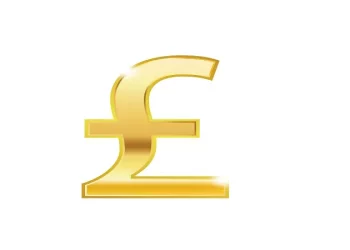The Federal Reserve (the Fed) plays a crucial role in shaping the U.S. economy through its monetary policy decisions, particularly changes in interest rates. When the Fed raises interest rates, it has a direct impact on the value of the U.S. dollar. This article delves into the effects of a Federal Reserve rate increase on the U.S. dollar, exploring the underlying mechanisms and the broader implications for the economy and financial markets.
1. Strengthening of the U.S. Dollar
One of the primary consequences of a Federal Reserve rate increase is the potential strengthening of the U.S. dollar. Higher interest rates make holding U.S. dollar-denominated assets more attractive to investors seeking better returns. As a result, demand for the U.S. dollar increases, driving up its value relative to other currencies. A stronger dollar can make imports cheaper, as it requires fewer dollars to purchase goods and services from foreign countries. Conversely, it can make U.S. exports relatively more expensive, potentially impacting trade balances.
2. Impact on Inflation
Raising interest rates is a tool used by the Fed to control inflationary pressures in the economy. By increasing rates, the Fed aims to moderate economic growth, thereby reducing the risk of excessive inflation. When interest rates rise, borrowing becomes more expensive, which can lead to decreased consumer spending and business investment. This slowdown in economic activity can have a dampening effect on inflationary pressures. As inflationary expectations decrease, the relative attractiveness of the U.S. dollar may rise, further strengthening its value.
3. Capital Flows and Investment
A Federal Reserve rate increase can also influence capital flows and investment patterns. Higher interest rates in the United States make U.S. assets more appealing to foreign investors seeking better returns. This can lead to an inflow of capital, as investors purchase U.S. Treasury bonds, stocks, and other assets. The increased demand for U.S. assets puts upward pressure on the U.S. dollar, reinforcing its strength. However, excessive inflows of capital can have potential downsides, such as creating asset price bubbles or exacerbating trade imbalances.
4. Effects on International Trade
The impact of a Federal Reserve rate increase on international trade is complex. A stronger U.S. dollar resulting from higher interest rates can make U.S. exports relatively more expensive, potentially reducing foreign demand for American goods and services. This can negatively impact export-oriented industries and the overall trade balance. However, a stronger dollar can also make imports cheaper, benefiting domestic consumers by offering access to cheaper foreign goods. The net effect on international trade depends on various factors, including the elasticity of demand for U.S. exports and imports, the competitiveness of domestic industries, and the overall state of the global economy.
5. Emerging Markets and Capital Outflows
A Federal Reserve rate increase can have significant repercussions on emerging markets. When U.S. interest rates rise, it becomes more attractive for investors to allocate their funds to U.S. assets rather than riskier investments in emerging markets. This can trigger capital outflows from these economies, leading to currency depreciation and potential financial instability. Weaker currencies in emerging markets can make servicing dollar-denominated debt more challenging, potentially exacerbating debt burdens and economic vulnerabilities.
6. Financial Market Volatility
Changes in interest rates by the Federal Reserve can also introduce volatility to financial markets. Investors closely monitor the Fed’s decisions and adjust their strategies accordingly. Anticipated rate hikes can lead to increased market volatility as investors reassess risk and reposition their portfolios. Currency markets, in particular, can experience heightened volatility as market participants react to the expected impact on the U.S. dollar. Fluctuations in exchange rates can have implications for global financial markets, affecting asset prices, investment decisions, and capital flows.
Conclusion
A Federal Reserve rate increase has far-reaching implications for the U.S. dollar, the economy, and financial markets. Higher interest rates can strengthen the U.S. dollar, impacting trade balances and influencing inflationary pressures. Capital flows and investment patterns are also affected, as foreign investors seek higher returns in U.S. assets. The impact on international trade is complex, with potential effects on both exports and imports. Emerging markets may face challenges due to capital outflows and currency depreciation. Additionally, financial market volatility can increase as investors adjust their strategies in response to changes in interest rates. Understanding the impact of a Federal Reserve rate increase on the U.S. dollar is crucial for investors, policymakers, and individuals involved in international trade and finance.
Related Topics:


























